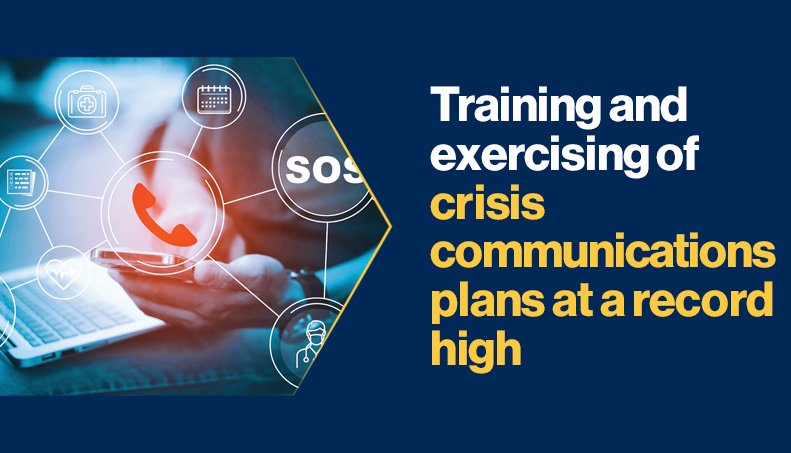Imagine this: It’s 3 a.m., your phone buzzes like an angry hornet, and suddenly you’re thrust into the heart of a company-wide cyber breach. Your team’s scrambling, stakeholders are panicking, and the clock’s ticking louder than ever. I’ve been there—back in my early days consulting for a mid-sized tech firm during a massive data outage. We barely held it together because our communication plan was more wishful thinking than solid strategy. That’s why when the Business Continuity Institute (BCI) dropped their Emergency & Crisis Communications Report 2025 earlier this year, it felt like a lifeline for folks like us who’ve stared down the barrel of chaos.
This report isn’t just another dusty PDF; it’s a wake-up call wrapped in data and insights. Sponsored by F24, a leader in resilience tech, it dives deep into how organizations are handling emergencies in our hyper-connected world. And trust me, with severe weather and cyber threats on the rise, this stuff hits home harder than ever.
What is the BCI and Why Does This Report Matter?
The Business Continuity Institute, or BCI, has been the go-to authority on resilience since 1994, boasting over 9,000 members across 120 countries. They’re all about helping businesses bounce back from disruptions, and this report is their annual deep dive into crisis comms.
In its 11th edition, launched on March 5, 2025, the report surveys professionals worldwide to uncover trends, tools, and pitfalls in emergency communications. It’s designed to benchmark your setup against peers, spark debates on best practices, and ultimately make your crisis response sharper. If you’ve ever wondered why some teams thrive in turmoil while others flop, this is your roadmap.
Key Findings: Digital Dominance Meets Human Hurdles
The report paints a picture of a field in flux—tech is speeding things up, but people problems persist. It’s like upgrading to a Ferrari but forgetting to teach everyone how to drive stick.
Over 60% of organizations now use dedicated emergency notification or crisis management tools, a nod to the post-COVID digital shift. Yet, human factors like staff no-shows or outdated contacts are still the top reasons plans fail. It’s a reminder that no app can replace solid teamwork.
The Rise of Digital Tools in Crisis Response
Mobile phones and laptops are the MVPs for managing emergencies, with email and messengers like Teams or Slack leading activation efforts.
This trend has exploded since the pandemic, making responses quicker and more coordinated. Organizations with SaaS-based tools activate plans faster than those stuck in manual mode, proving tech’s worth in high-stakes scenarios. But hey, don’t ditch the human touch—it’s the glue holding it all together.
Preferred Methods for Team Activation
Email reigns supreme, followed closely by enterprise chat apps.
These methods allow real-time updates, beating out old-school phone trees that can feel like herding cats. The report notes a clear preference for digital over analog, with 60.3% leaning on specialized software despite budget squeezes in 2024.
Role of SaaS in Modern Crisis Management
Software-as-a-Service platforms are the gold standard, offering scalability without the IT headache.
They’re user-friendly, integrate seamlessly, and help most teams kick off responses in under 60 minutes. If you’re still relying on spreadsheets, this might be your cue to upgrade—before the next storm hits.
Persistent Challenges: The Human Factor
Despite tech advances, people issues steal the show as the biggest roadblocks.
Lack of response from staff tops the list, followed by stale contact info and coordination mishaps. It’s ironic— we’ve got AI everywhere, but forgetting to update a phone number can derail everything. Emotional appeal here: Think of the stress when a key player ghosts during a flood alert; it’s heartbreaking and avoidable.
Top Triggers for Emergency Plans
Severe weather events lead the pack, with cyber breaches and IT outages close behind.
These aren’t rare anymore; they’re the new normal in our climate-changed, hacked-up world. The report urges proactive prep, as most activations happen within an hour—plenty of time if you’re ready, eternity if you’re not.
Dissatisfaction with Current Tools
Many pros aren’t thrilled with their setups, citing poor features, integration woes, and costs.
It’s like buying a fancy gadget that doesn’t play nice with your other toys. Financial constraints hit hard in 2024, but the report suggests investing smartly to avoid bigger losses down the line.
Preparedness on the Upswing: Training and Exercises
Good news: 75% of organizations trained at least once last year, and over 80% ran exercises.
This uptick shows growing awareness—folks are drilling like athletes before the big game. My own story? After that tech outage fiasco, we mandated quarterly simulations; it turned our ragtag crew into a well-oiled machine.
Benefits of Regular Drills
Exercises uncover weak spots before they bite, boosting confidence and speed.
They’re not just box-ticking; they build muscle memory for when adrenaline kicks in. The report highlights how this prep directly cuts activation times and failure rates.
Comparison: 2025 Report vs. Previous Years
This edition builds on past ones, showing steadier digital adoption but stubborn human challenges.
In 2024, training was around 70%; now it’s 75%, a small but meaningful jump. Cyber threats climbed the trigger list, reflecting real-world spikes. Overall, progress is evident, but the gap between tech and people lingers like a bad habit.
| Aspect | 2024 Report | 2025 Report |
|---|---|---|
| Tool Usage | 58% using dedicated tools | 60.3% using dedicated tools |
| Training Frequency | 70% at least once | 75% at least once |
| Top Trigger | Severe weather | Severe weather, with cyber up |
| Activation Time | Under 60 mins for most | Same, but faster with SaaS |
Pros and Cons of Digital Crisis Tools
Pros:
- Lightning-fast activation and updates.
- Scalable for global teams.
- Integrates with existing workflows, reducing errors.
Cons:
- High costs can strain budgets.
- Over-reliance might sideline human judgment.
- Integration issues if not chosen wisely.
Weighing these, the pros often outweigh cons, especially for larger orgs. But small teams? Start simple and scale up.
Where to Get the Report and Best Tools Recommended
Head to the BCI website (thebci.org) or F24’s page (f24.com) for the full download—it’s free and packed with actionable insights.
For tools, the report spotlights SaaS options like F24’s suite for notification and management. Best picks include those with mobile integration, real-time analytics, and easy training modules. If you’re shopping, look for user reviews on sites like G2 or Capterra.
People Also Ask
What is crisis communication in emergencies?
It’s the strategic sharing of info during disruptions to minimize harm and guide responses—think clear, timely messages that keep everyone aligned.
Why is emergency communication important?
It saves lives, protects assets, and maintains trust; without it, confusion reigns, turning bad situations worse.
What are the 4 phases of emergency management?
Mitigation, preparedness, response, and recovery—each needing solid comms to succeed.
What are the 5 P’s of crisis management?
Predict, prevent, prepare, perform, and post-crisis review; a handy framework for staying ahead.
Real-World Examples: Lessons from the Field
Take the 2024 wildfires in California—companies with digital alerts evacuated teams swiftly, while others lagged due to outdated lists. Or that cyber hack at a major retailer; their Slack-based response contained the breach fast. These stories, echoed in the report, show theory in action.
Humor break: Ever tried coordinating a crisis via carrier pigeon? Me neither, but without modern tools, it might as well be. The key? Blend tech with training for that unbeatable combo.
Transactional Tips: Best Tools for Your Toolkit
Shopping for crisis software? Prioritize user-friendly interfaces—F24’s platform gets rave reviews for seamless alerts. For budgets, free trials from providers like Everbridge or AlertMedia let you test-drive. And don’t forget integration with your CRM or HR systems for auto-updated contacts.
FAQ
What are the main takeaways from the BCI 2025 Report?
The report emphasizes digital tools’ rise for faster responses, but warns that human errors like poor coordination remain top issues. With 60.3% using specialized software, it’s clear tech is key, yet training is non-negotiable.
How has crisis communication evolved since COVID?
Post-pandemic, there’s a surge in digital methods like messengers and SaaS, speeding up activations. The report notes this shift has made plans more effective, though human factors still challenge progress.
Where can I download the full BCI Emergency & Crisis Communications Report 2025?
Visit the BCI’s resource section at thebci.org or F24’s site at f24.com/en/resources for the free PDF. It’s a must-read for benchmarking your strategies.
What tools does the report recommend for emergency notifications?
SaaS-based systems top the list, with email and enterprise apps for activation. Look for features like mobile compatibility and analytics to enhance your setup.
Why do human factors cause most communication failures?
Outdated info, no-shows, and coordination slips stem from inadequate prep. The report stresses regular exercises—over 80% did them in 2024—to build resilience.
Wrapping up, the BCI’s 2025 report is more than data; it’s a blueprint for turning potential disasters into managed events. From my experience, ignoring these insights is like sailing without a compass—risky and unnecessary. Dive in, apply the lessons, and watch your team’s confidence soar. If you’ve got a crisis story, share it in the comments; we’re all in this together.



